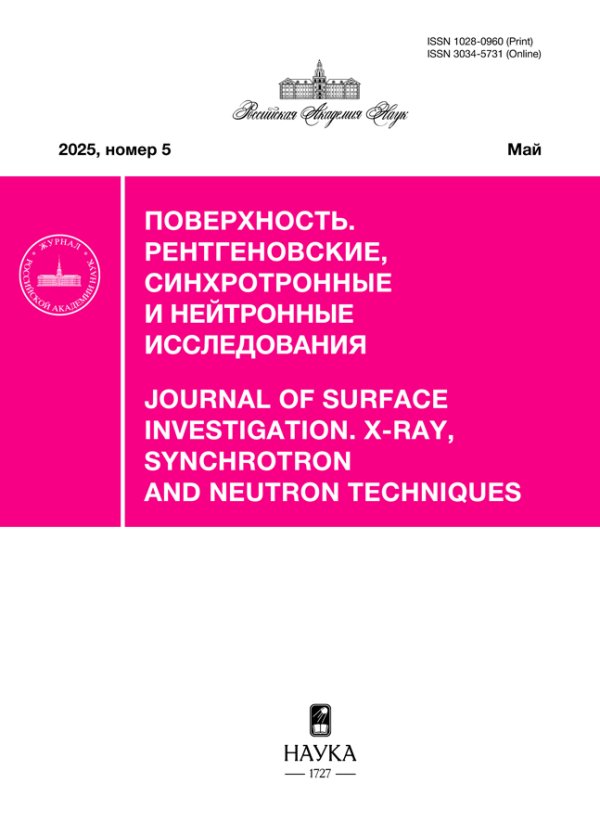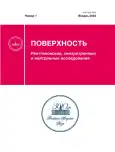Механизмы формирования и накопления разориентаций в деформируемых металлах и сплавах
- Авторы: Черепанов Д.Н.1,2, Соловьева Ю.В.1, Старенченко В.А.1
-
Учреждения:
- Томский государственный архитектурно-строительный университет
- Томский государственный университет систем управления и радиоэлектроники
- Выпуск: № 1 (2024)
- Страницы: 90-101
- Раздел: Статьи
- URL: https://journals.rcsi.science/1028-0960/article/view/257065
- DOI: https://doi.org/10.31857/S1028096024010133
- EDN: https://elibrary.ru/DGOHFK
- ID: 257065
Цитировать
Полный текст
Аннотация
Теоретически исследовано формирование разориентированных субструктур в пластически деформируемых металлических материалах. Получены выражения для интенсивности накопления малоугловых и высокоугловых границ разориентации. В рамках математической модели сдвиговой пластической деформации и упрочнения выполнены численные расчеты зависимостей средних характеристик дефектной среды от степени деформации в условиях одноосного сжатия с постоянной скоростью деформации при комнатной температуре. Показано, что интенсивность генерации малоугловых стенок наклона существенно зависит от сценария изменения плотности порогов на винтовых сегментах дислокационных петель, испускаемых дислокационными источниками. Основным механизмом формирования малоугловых стенок является перестроение скоплений краевых сегментов дислокационных петель в стенки наклона под воздействием потоков межузельных атомов, генерируемых движущимися винтовыми сегментами. Предполагается, что малоугловые стенки сливаются в одну до тех пор, пока суммарный угол разориентации слившихся стенок не достигнет критической величины около 10°, после чего расстояние между дислокациями в стенке уменьшается до соответствующей критической величины и дальнейшее проникновение отдельных дислокаций в стенку становится невозможным. Выражение для интенсивности формирования высокоугловых границ получено как следствие продолжения работы дислокационных источников и формирования скоплений малоугловых стенок, суммарная энергия которых выше, чем энергия равновесной высокоугловой границы при той же разориентации.
Об авторах
Д. Н. Черепанов
Томский государственный архитектурно-строительный университет; Томский государственный университет систем управления и радиоэлектроники
Автор, ответственный за переписку.
Email: d_n_ch@mail.ru
Россия, 634003, Томск; 634050, Томск
Ю. В. Соловьева
Томский государственный архитектурно-строительный университет
Email: j_sol@mail.ru
Россия, 634003, Томск
В. А. Старенченко
Томский государственный архитектурно-строительный университет
Email: d_n_ch@mail.ru
Россия, 634003, Томск
Список литературы
- Hoffmanner A.L. Metal Forming: Interrelation Between Theory and Practice. // Proc. Symp. on the Relation Between Theory and Practice of Metal Forming. Cleveland, Ohio, October, 1970. Boston: Springer, 2012. P. 503.
- Новиков И.И., Портной В.К. Сверхпластичность сплавов с ультрамелким зерном. М.: Металлургия, 1981. 168 с.
- Смирнов O.M. Обработка металлов давлением в состоянии сверхпластичности. М.: Машиностроение, 1979. 184 с.
- Утяшев Ф.З., Рааб Г.И. Научные основы деформационных технологий формирования ультрамелкозернистых и наноструктурных объемных материалов. Вологда: Инфра-Инженерия, 2021. 160 с.
- Zhilyaev A.P., Pshenichnyuk A.I., Utyashev F.Z., Raab G.I. Superplasticity and Grain Boundaries in Ultrafine-Grained Materials. Elsevier, 2020. 416 p.
- Утяшев Ф.З., Рааб Г.И., Валитов В.А. Деформационное наноструктурирование металлов и сплавов. Монография. СПб.: Наукоемкие технологии, 2020. 185 с.
- Рыбин В.В. Большие пластические деформации и разрушение металлов. М.: Металлургия, 1986. 224 с.
- Корзникова Г.Ф., Халикова Г.Р., Миронов С.Ю., Алетдинов А.Ф., Корзникова Е.А., Конькова Т.Н., Мышляев М.М. // Физическая мезомеханика. 2022. Т. 25. № 2. С. 47. https://doi.org./10.55652/1683-805X_2022_25_2_47
- Еникеев Ф.У. // Изв. вузов. Цветная металлургия. 2008. № 1. С. 43.
- Варгин А.Н. Бурханов Г.С., Зунг Нгуен Суан, Полькин В.И. // Международный научный журнал. 2013. № 6. С. 65.
- Рудаев Я.И. // Научно-технические ведомости СПбГТУ. 2005. № 2. С. 57.
- Перевезенцев В.Н., Свирина Ю.В. // Журнал технической физики. 1998. Т. 68. № 12. C. 39.
- Higashi K., Nieh T.G., Mabuchi M., Wadsworth J. // Scr. Metall. Mater. 1995. V. 32. № 7. P. 1079.
- Demirtas M., Kawasaki M., Yanar H., Purcek G. // Mater. Sci. Eng. A. 2018. № 730. P. 73. doi: 10.1016/j.msea.2018.05.104
- Demirtas M., Purcek G., Yanar H., Zhang Z.J., Zhang Z.F. // J. Alloys Compd. 2016. № 663. P. 775. Doi: 0.1016/j.jallcom.2015.12.142
- Старенченко В.А., Черепанов Д.Н., Соловьёва Ю.В., Попов Л.Е // Изв. вузов. Физика. 2009. № 4. С. 60.
- Старенченко В.А., Черепанов Д.Н., Селиваникова О.В. // Изв. вузов. Физика. 2014. Т. 57. № 2. С. 4.
- Кульман-Вильсдорф Д. // Физическое металловедение / Ред. Кан Р. Вып. 3. Дефекты кристаллического строения механические свойства металлов и сплавов. М.: Мир, 1968. 484 с.
- Старенченко В.А., Черепанов Д.Н., Слободской М.И. // Изв. вузов. Физика. 2009. № 9/2. С. 108.
- Parameswaran V.R., Weertman J. // Met. Trans. 1971. V. 2. P. 1233.
- Красноперова Ю.Г., Воронова Л.М., Дегтярев М.В., Чащухина Т.И., Реснина Н.Н. // Физика металлов и металловедение. 2015. Т. 116. № 1. С. 1.
- Mader S., Seeger A. // Acta Metall. 1960. V. 8. P. 513.
- Staubwasser N. // Acta Metall. 1959. V. 7. Iss. 1. P. 43.
- Беляков А.Н. // Физика металлов и металловедение. 2009. Т. 108. № 4. С. 412.
Дополнительные файлы










